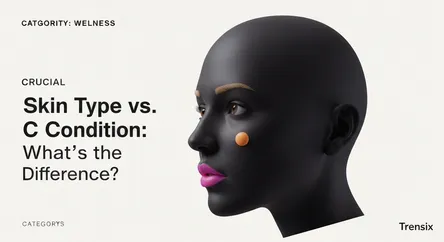Wellness
Skin Type vs. Condition: What's the Difference?

Learn the crucial distinction between your inherent skin type and temporary skin conditions to build a truly effective skincare routine.
What is it?
Your skin type—normal, oily, dry, or combination—is genetically determined and relates to the amount of sebum (oil) your skin naturally produces. It's the baseline you are born with. A skin condition, however, is a temporary state that can affect any skin type. Conditions like acne, dehydration, rosacea, or eczema are often triggered by internal factors like hormones and stress, or external factors like weather and lifestyle. For example, a person with an oily skin type can also have the condition of dehydrated skin.
Why is it trending?
The distinction is gaining traction due to the rise of personalized skincare. Consumers are moving beyond generic advice to become more educated about their specific needs. Understanding this difference is key to navigating the vast market of targeted treatments. Social media and beauty influencers emphasize that treating a temporary condition (like dehydration) as a permanent type (like dry skin) can lead to using the wrong products and worsening skin issues. This knowledge empowers users to stop fighting their skin and start working with it.
How does it affect people?
This understanding fundamentally changes how people approach skincare. Your skin type should guide your core daily routine, like your choice of cleanser and moisturizer. Skin conditions, on the other hand, should be addressed with specific, targeted treatments like serums or exfoliants. Knowing the difference prevents wasting money and causing further irritation. It allows individuals to build a smarter, more responsive routine that addresses root causes, leading to healthier skin and more effective, long-term results.